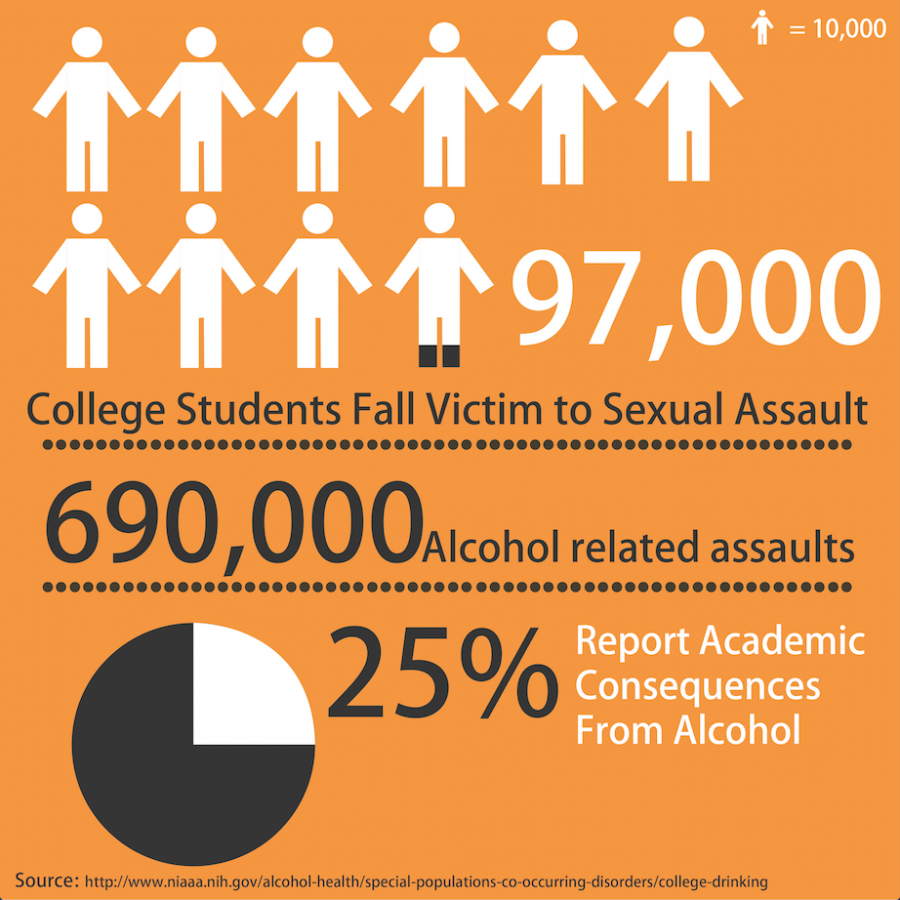Collegiate Safety Issues Concern Future Students
December 18, 2015
With national safety being such a hot topic and tragic terrorist attacks becoming increasingly common, it is easy to forget basic personal safety tips. We worry so much about overseas threats and the plans created by politicians to counter them that we often ignore the potential dangers lying closer to home. A prime example – assault on college campuses.
Assault is not something that occurs only at distant places to fictional people; it happens to real students as close to home as Indiana University Bloomington. On November 13, a young female student was walking alone in the very early morning on a dimly lit path in Dunn’s Woods, which is a secluded area on the IU campus. She was grabbed by two men who held an unidentified sharp object at her throat, but the woman was able to escape and alert police.
Such occurrences are frightening for the many East students planning to attend IU Bloomington.
“I take dual credit IU classes at East so they call me and notify me as if I am a student on campus every time an assault happens. It’s really scary getting called at three in the morning and hearing about these incidents,” senior Brooklyn Taulman said, who is planning on going to Indiana University next year.
Assault is by no means happening at just IU. It exists at every university, in every city, in every state, in every country, all across the world. In fact, a study done by the American College Health Association states that 128,000 violent crimes involving a weapon are reported yearly by students aged 18 to 24.
Although 100% of the blame can never be placed on anybody but the attacker(s) in an assault case, it is important to realize that there are protection measures that can be taken to prevent you from becoming a victim.
Most colleges have taken multiple steps to ensure students safety, such as installing emergency telephones and improving university police patrols. However, emergency telephones are not always accessible, and it is impossible for police to be everywhere at anytime.
Despite these attempts, many also believe that schools do not emphasize safety enough, for assault rates are still not declining.
“I believe that parents highlight safety more than schools do, especially towards young girls, but not well enough. I think schools should educate students about assault and what precautions they should take, like mandatory assault training at orientation,” senior Shelby Gooldy said, also planning on attending IU.
No matter what the situation is at your school of choice, developing personal prevention methods is a significant deterrent against assault.
It is always smart to stick to well lit, high traffic paths with limited bushes, alleys and other potential hiding spots for attackers. Though it is not always possible, try to be accompanied by someone while walking places, especially at night. You are less likely to be approached than when alone, because attackers know that one person can run for help.
Another important safety measure is to always follow your instincts. If ever you feel uncomfortable with a situation, whether it is at a party, a date or simply the path you are walking on, get out. It is always better to be embarrassed than in a dangerous situation. Even if your suspicion ends up to be false, taking the initiative to protect yourself is vital.
Finally, consider taking a self-defense class, such as the one offered at East toward the end of the year. The session is guaranteed to be helpful no matter your gender, and any sort of professional training will no doubt be useful if an attack were ever to occur.
Never feel embarrassed to take your personal protection seriously. By being prepared to follow basic procedures and becoming aware of your surroundings, you could prevent yourself from encountering potentially life-threatening situations.







